From: Porthcothan to Padstow
Distance: 13.5m / 21.8km
Cumulated distance: 88.2m / 142km
Percentage completed: 8.58
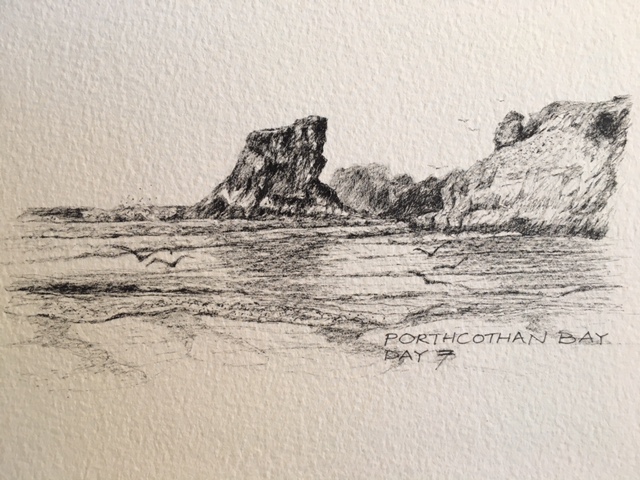
Today’s walk wiggled along the coast, doubling back and forth, getting us to our destination in no hurry whatsoever. I walked with Liz above Booby’s Bay wondering at the origin of the name. Despite the humorous overtones, this stretch of the coast has been pretty dastardly for ships. There are rocks off Trevose Head which have caused many a shipwreck. There’s a bovine theme to the names of the rocks: The Bull closest to the coast and The Cow and Calf further out to sea. The ship Whinfield in 1901 came unstuck in dense fog and while the crew miraculously survived, the ship herself sank among the herd. The Runswick, carrying coal in 1918, was torpedoed by a German U Boat. She too came to rest on the outer reef and is now home to cup corals, sea squirts and jewel anenomes. And just four years ago when a monster storm carried more than a metre of sand away from the bay, the SV Carl was revealed in all her pristine glory, having been sunk in the Atlantic almost a century before.
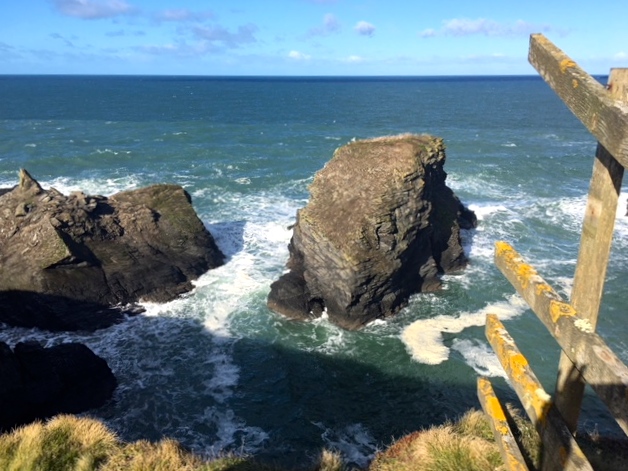
Treacherous coastline around Constantine Bay
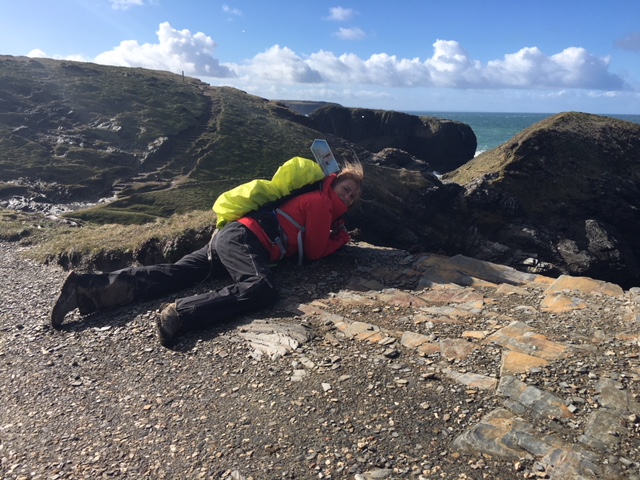
Looking down over the cliffs at Treyarnon ..
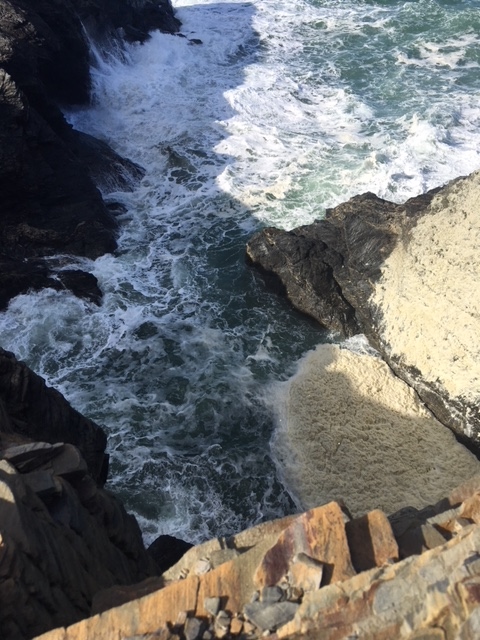
.. and the view from there!
In fact it seems there’s a complete fleet beneath the rocks around Trevose Head: The Poldown was struck by a German mine in 1917, The Anna Sofie was torpedoed by a UBoat in the same year and just a few months later the same UBoat sank the Carpathia, the liner that had rescued Titanic survivors in 1912. I could go on .. it must be a diver’s paradise beneath the waves around Trevose Head.
For several days I have been trying to get a photo of the choughs which fly around the Cornish coastline. It’s not easy on an iPhone. The chough is the bird used in the emblem for Cornwall, along with a fisherman and a tin miner. They nest in the cliffs and stacks all along the coast and look like a sweeter and plumper version of a jackdaw .. although I don’t think you’ll be able to tell this from my photo!
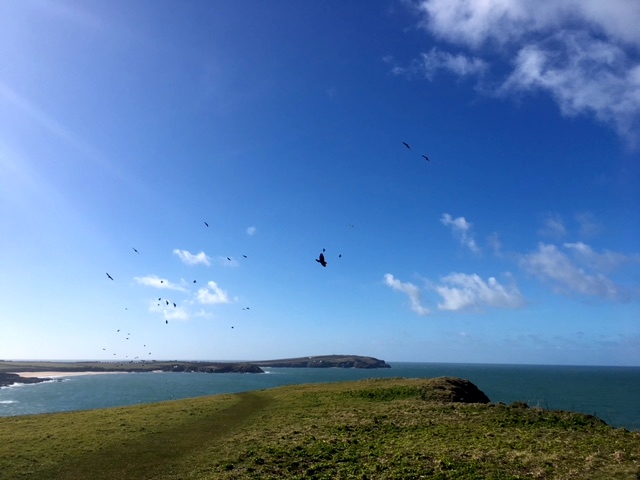
Choughs on the wing
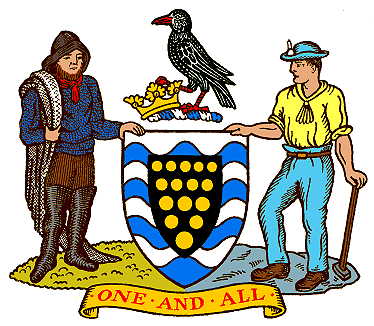
The Cornish emblem
Mother Ivey’s Bay is one of the few places I know of where witchcraft gets a positive rap .. well, initially anyway. The bay, half way into the walk today, was named after a white witch who is said to have cursed the land of a local fishing family who meanly didn’t share their catch with the starving villagers of Padstow. They callously ploughed the fish into their fields as fertiliser instead. Since then, mysterious deaths have allegedly occurred of people digging in the fishy fields.
It was very, very windy today. Which meant that the waves all had fantastic white horses riding their crests. We had virtually no rain and the warmth of the sun, despite the wind, made it feel like spring was just around the corner.
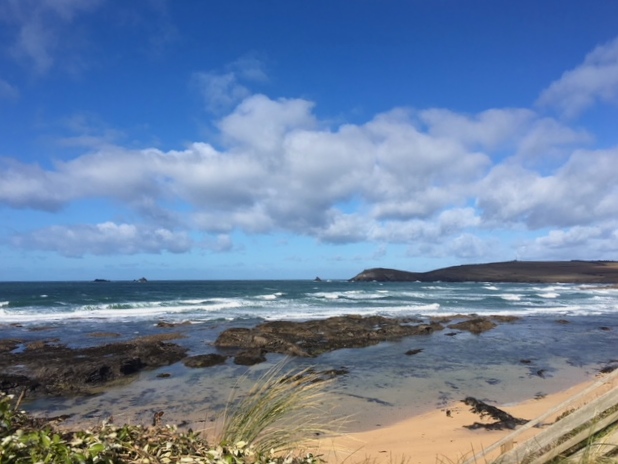
Waves at Booby’s Bay
Dotted along the South West Coast Path are benches, dedicated as memorials to people who have loved the area. Many of them have fabulous views and provide a resting place for contemplation.
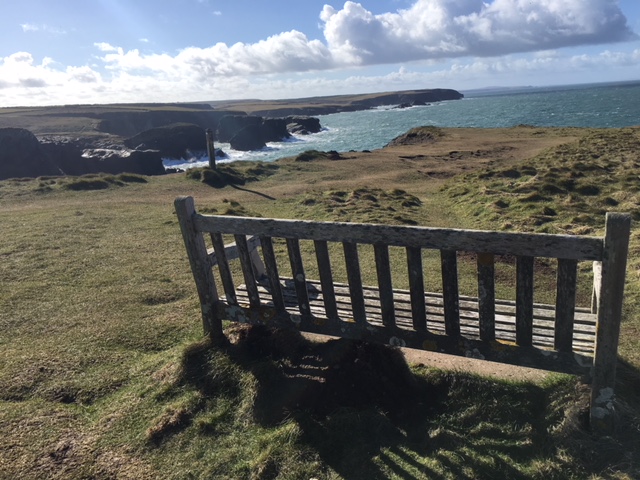
A fine place for a memorial bench
At Harlyn Bay we took a quick lunch break .. modest in comparison to yesterday’s but delicious nevertheless. The edge of the coast from Cataclews Point to Harlyn Bay was used as a graveyard in the Bronze Age. There have been many archaeological finds here and in 1900, workmen digging the foundations for a new house, found over 200 graves. Each one contained a body lying on its side in a crouched position with the head pointing north. One contained the body of a child, buried with two mice. Curious, huh.
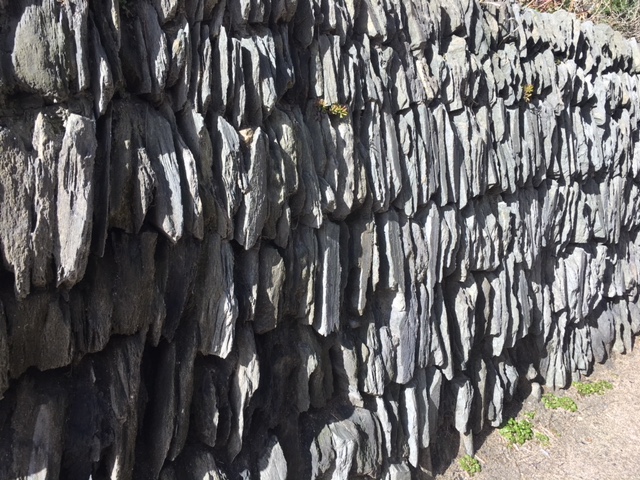
Cornish hedge
Many of the walls in this part of Cornwall are made from slate. In the same way as Cotswold dry stone walls have no mortar, the ones here have nothing holding them together, other than the skill that was used to pack them tightly and securely. Lichen and wild flowers grow over the top of the ‘hedges’, concealing their stoney base. But I really think they’re beautiful in their own right.
After Harlyn we climbed back up the cliffs overlooking Trevone Bay. Liz was a fabulous guide, pointing out all sorts of local places of interest.
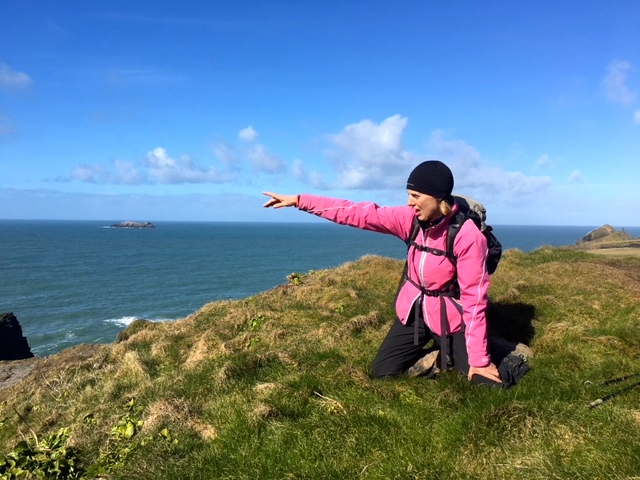
Pointing out blow holes
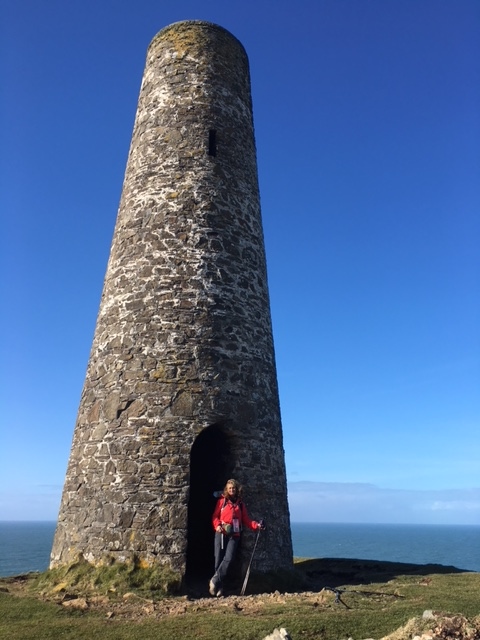
Stepper Point
When we reached Stepper Point we were able to take a look inside the Lookout Station. It’s a stone tower which was built as a ‘day mark’ to serve as a navigation beacon for seafarers during daylight. It is referred to locally as the Daymark. The wind was pretty gusty up at the point but inside provided an immediate refuge.
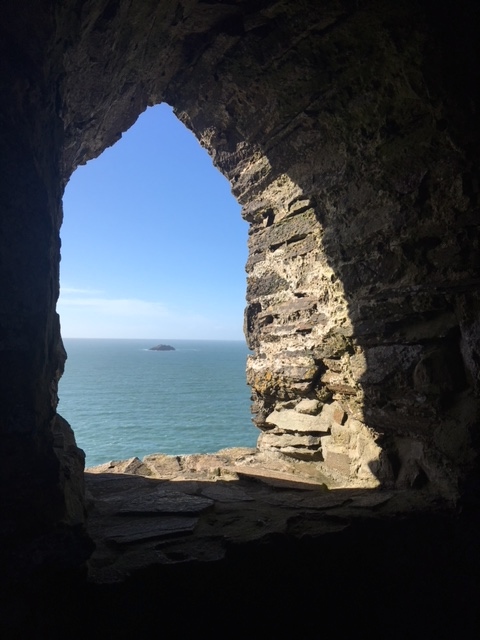
View from Daymark
From close to the Coastguard Station a little further on, we were able to look across Padstow Bay to see Liz’s house, which was rather special. At the mouth of the Bay and the Camel Estuary lies Doom Bar, which I thought was just a beer until now. Turns out the beer is named after a treacherous bar of sand which has been the cause of hundreds of shipwrecks, as they turned into the River Camel, heading for Padstow. Something of a theme today.
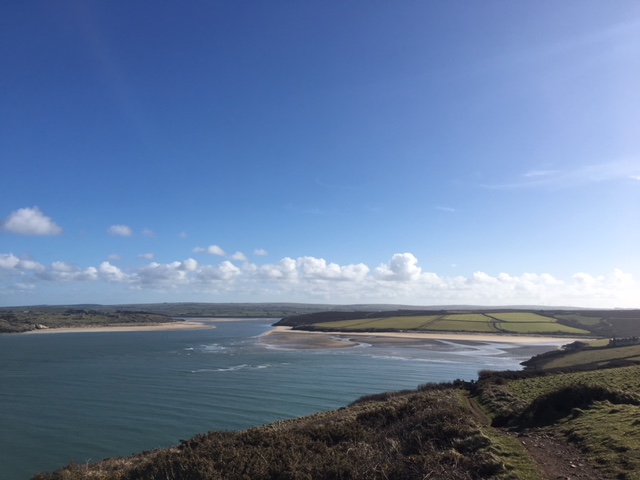
View across Camel Estuary
We walked the length of the sands on the western side of the estuary, where the tide had created fashion-worthy patterns. Close to Padstow we scrambled across seaweed covered rocks to emerge in the village.
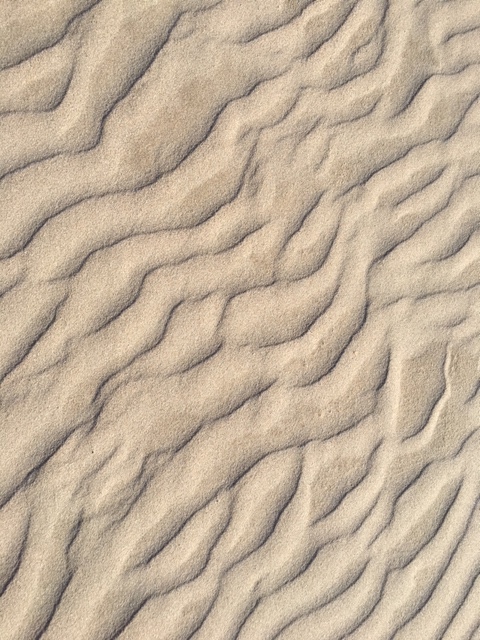
Estuary sand patterns

Emerging from the seaweed covered rocks
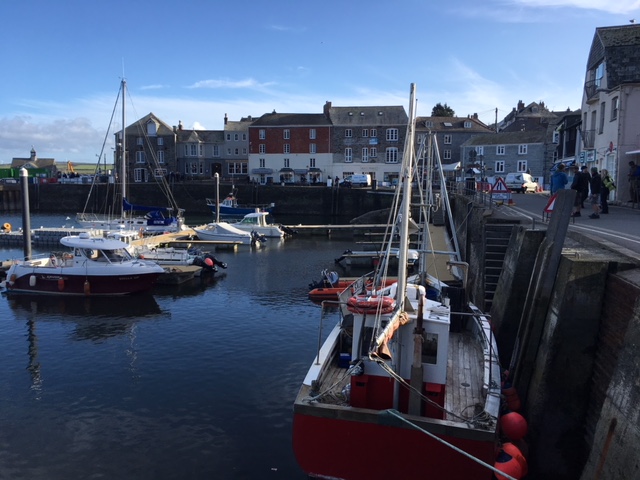
Padstow harbour
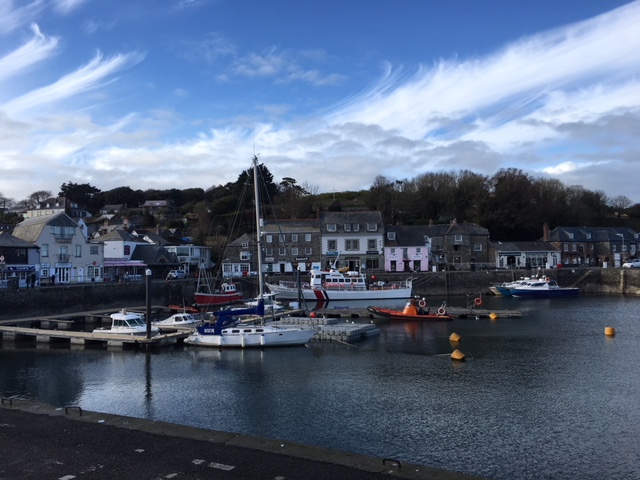
Pastel houses in Padstow
We ended the day at the ‘Prawn on the Lawn’, to buy Dover sole and a bottle of Camel Valley Rosé Brut for the evening’s supper .. fitting, as this was not only a raffle prize at the Black Dog launch dinner but also Liz’s favourite, which I included in a ‘Celebrations’ painting for her to celebrate a big birthday!
Black Dog Tails
You may remember the extraordinary story of Cena and his handler Corporal Jeff de Young. I posted about them before I started the walk. I just found out that Cena died earlier this year and was given something akin to a state funeral, with hundreds lining the street to salute him. Click on the photograph to see the you tube video.
![]()


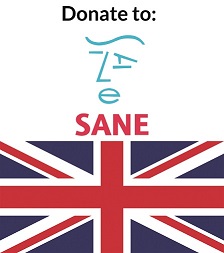
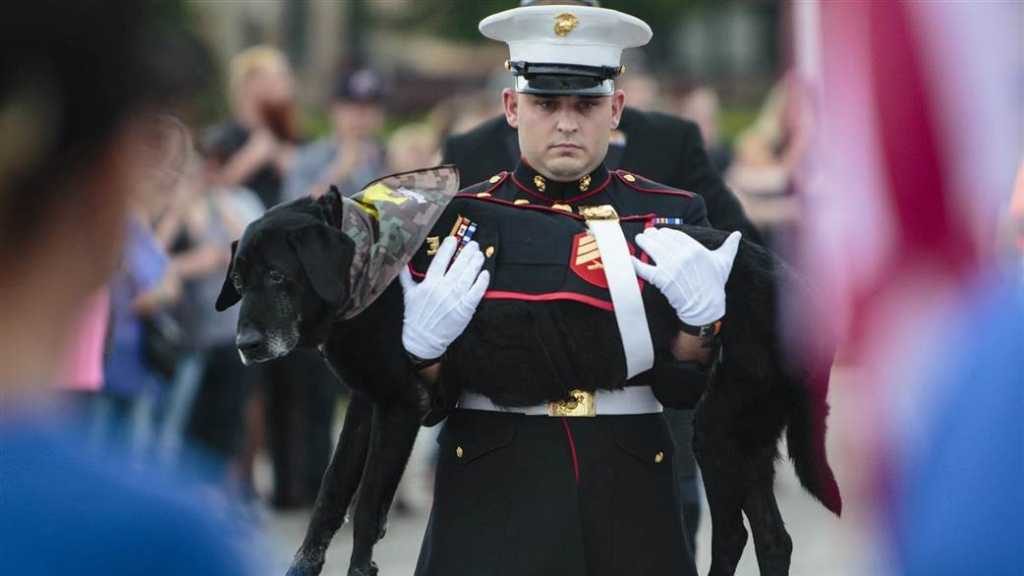
One week of walking and so much has changed since that first day. I see Spring skies in your photos and I am learning lots in the reading of your blog. The red marker is creeping up the map!!
It feels to be going both fast and wonderfully slowly! Enjoying it every bit as much as you did, Marilyn. x
Had us all crying in our little office here Jules that farewell to Cena.
Beck, I actually got in touch with Jeff, Cena’s owner. He was a fine man.
Well I’m loving your blog but I think I’ve ended every time in tears from reading the stories about those beautiful dogs and their beautiful ‘tails’! xxx
Aren’t they wonderful? Doing the research for them left me in awe. xxx
Estuary sand ripples, Cornish hedges, tin miners, exotic beach cliffs…you were meant to be a geologist, Jules! I am so enjoying reading your posts and about the details of your marvelous adventure. Our Freycinet Peninsula hikes seem so long ago now. How are your feet holding up?
Oh Silvia .. how lovely to hear from you! I have such great memories of our Freycinet adventure. I’m often wishing you and Doug were along with me now, explaining why certain terrains look the way they do! I think you would love it here. Care of Nok, my feet are doing just fine, thank you!!
Make the most of those welcome benches. When you get inland they will be much scarcer! I am trying to anticipate your route. I eventually left the SW Coast Path at Barnstaple. I’m enjoying your illustrations.
I can well imagine I will have to take my rests sitting on the grass once in land! I too leave the coast at Barnstaple .. will miss the coast, I suspect.
We’re enjoying reading your blog. Happy memories of holidays at Constantine Bay. Well done and glad the weather is improving for you.
Great hearing from you Daisy! I loved my childhood holidays in that area too. Weather improvement reversed today!
A booby is a seabird, bit like a gannet. Boo, not as much fun as what you thought!
Aha! What a silly name for a bird!
Gorgeous blue skies in one of my favourite places – can’t be beaten on a day like that! Xx
Lost count of the number of times I said out loud, ‘this is amazing’!! xx
I’m enjoying your blog very much, especially the sketches and photos. I did LEJOG in 2009. On 17 March, I start the Great English Walk, from Chepstow to Berwick upon Tweed. I think the only point where our routes coincide is Hebden Bridge. I’ll look out for you! I’ll be blogging at http://litehikersblog.blogspot.co.uk. I was going to say “keep positive” but you show no sign of flagging yet.
Thank you so much for getting in touch, Geoff and best of luck with the Great English Walk .. not come across that one, so will read your blog with great interest!
Dover sole!! Hmmm….xx
Over-rated! xx